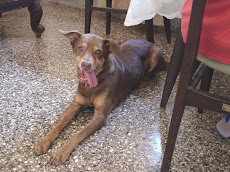This would go down in my imaginary diary as the week my faith in pharma and doctors died. And if you are thinking this is about Dr. Oscar Rebello, you would be wrong. At the risk of sounding like something out of Harry Potter, it’s about the Papaya Leaf and the Platelet Count. Because there are those of you who say, tcha, who’s going to read this rubbish till the end, in brief it is this:
If you or anyone you know has dengue or chikungunya or any illness which drastically reduces the blood platelet count of the patient, take one papaya leaf. It does not interfere with the medication. Wash it in plain water. Discard the stem and the hard central veins in the leaf. Cut the green leafy portion into small pieces and run it through a mixer or pound it to a paste. If it is too dry add a teaspoon of water, pound to a paste, squeeze the paste through a muslin cloth or a tea strainer. You will get about 2 tablespoons of nasty tasting green liquid. Make the patient drink it. I hear having it first thing is the morning is very effective. But those who have had it in the evening too say it works like a dream. The platelet count jumps within 3 hours. That’s the short version.
Herbal medicine in India has been saving lives for thousands of years. Ayurveda is probably as old as the Indus Valley Civilization dating back to 3000 BC. All four Vedas especially the Rig Veda carry references to diseases and their cures through herbs and roots.
The ancient art of Ayurveda was systematically killed by the colonialists when they took over the country. It was suppressed by the British. The East India Company banned and shut down all Ayurvedic colleges in 1833. When Ayurveda re-emerged for almost 100 years, herbal remedies were dismissed as “the poor man’s medicine” practiced in rural areas where western medicine was too expensive or not available. The irony was the country folk were healthier than the urban class.
The Portuguese in Goa actually did shut down Ayurvedic practitioners. The Vaidyas of Hindu Pharmacy were the only Ayurvedic dispensers allowed to practice after one of them saved the life of a Viceroy’s wife.
Only now more and more patients are realising that allopathy or Western Medicine is not just expensive, but has hidden side effects that cause more problems than the original ailment itself.
When the Chikungunya outbreak happened a couple of years ago, The Times of India Mumbai edition carried an article on the effectiveness of the papaya leaf juice cure to completely eliminate the crippling joint pains that kicked in after the fever ended. My brother read the article and was so desperate to try anything to get back to his active life that he experimented with the papaya cure. It worked the same day. He had another two tablespoons the next day and was 100 percent fit.
Later I learned the papaya leaf juice worked for dengue patients too. The common factor was a drastically reduced platelet count in both diseases. Dengue involved internal haemorrhaging too.
Delhi is currently in the grip of a dengue epidemic. The 8-year old son of a friend was laid low with a continuous fever. His blood test showed his platelet count had dropped. She called me to ask about the papaya cure. She drove 25 km to find a papaya leaf. Those in the city had been used up by many who believed in the cure. She bribed her son to swallow the foul tasting juice. He did. The fever subsided the very same evening and he was up and about full of beans.
That’s the long story. The short story is three cheers for the papaya tree. Its fruit is pure heaven to eat and good for diabetics. A slice of the raw fruit gets rid of acne, pimples and scars. It also tenderizes tough meats. Its leaf is a thing of beauty. Sonia of Soto Haus Candolim, who uses plant products for decoration in her lacquered furniture, used a yellowed papaya leaf for a table-top design and covered it with her special brand of lacquer. And then you have the green leaf. What can I say… It saves lives.
Sunday, September 12, 2010
Subscribe to:
Post Comments (Atom)



No comments:
Post a Comment